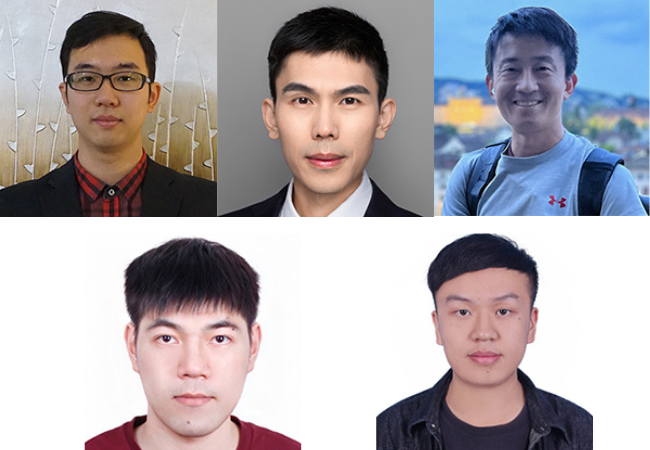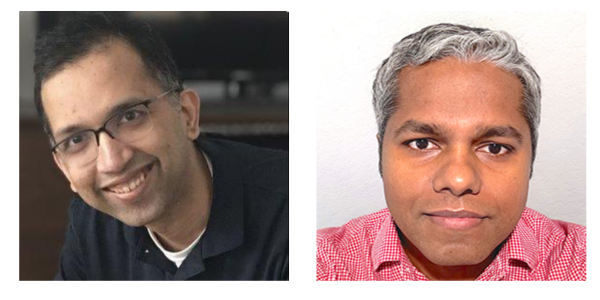
Academic research and industry research can often exist in silos, but a multi-year collaboration between Jie Ding, an associate professor in the University of Minnesota’s School of Statistics, and Cisco Research Head of Cybersecurity Research Ashish Kundu and Senior Researcher Jayanth Srinivasa highlights the immense power of bringing the two research modes together.
Their collaboration began in 2021 when Ding’s research team was trying to figure out how to ensure machine learning was high quality, impervious to theft, and protective of data. They drafted a proposal to Cisco Research and their journey started there.
With Ding’s background in statistics and math, Srinivasa’s expertise in natural language processing and machine learning, and Kundu’s security and privacy background, the trio benefit from complementary research depths and agendas. The team is also aided by professors Xuan Bi of Carlson School of Management and Mingyi Hong of the Department of Electrical and Computer Engineering and doctoral students Xun Xian and Ganghua Wang.

Evolving Research through the Exploration Process
The team has since launched three research projects, including one focusing on advancing adversarial learning and one on developing efficient and reliable watermarking for generative AI. They’ve also co-authored four papers and co-presented at the International Conference on Learning Representations, the Conference on Neural Information Processing Systems, and the International Conference on Machine Learning.
Working with Cisco enabled Ding and his team to change research focuses over the three years as the group is problem-driven, which means they find new problems along the way and try to develop related insights and solutions.
“The exploration process really attracts us and especially the PhD students who are trying to expand their horizons. They want to talk to industry leaders to understand state-of-the-art problems and find solutions through collaboration,” said Ding. “Cisco Research gives us a lot of room for this.”

Cisco Research has funded a few hundred projects through their sponsored research methodology within academia while also managing internal projects with a team of researchers from different backgrounds. New projects come out of individual researcher interests or identification of problems. Oftentimes research begins internally, but Cisco Research also gets proposals from principal investigators (PIs) at academic institutions like UMN. The team collectively discusses proposals before accepting and also encourages the research to become open source so that it is of broader benefit to the community at large.
Steps for a Mutually Beneficial Relationship
Regular communication is a key part of this collaboration, and Ding and his PhD students meet with the Cisco Research team every two weeks to talk about recent thoughts, exchange ideas, and collaboratively formulate the next actionable steps. The team also communicates more often as needed, such as in the event of paper deadlines.
“We found that it’s very helpful to receive suggestions from the Cisco side, and we feel that Ashish and Jayanth are very open to ways of doing research from the academic perspective,” said Ding.
Also important is the space in-between to conduct research. Kundu says that industry researchers should let their academic research partners do their work without restriction.
“We provide guidance when necessary but also just focus on learning from them, which can open up new dimensions,” said Kundu, who is especially impressed with the graduate students. “If we are discussing ideas with a lot of emphasis, they go and experiment with that idea and come back. We really feel as if we are part of a bigger team.”
The graduate students are extremely important to the work as they push the research forward and continuously explore what could be next. According to Ding, the grad students have been very appreciative of the opportunity to work with Cisco.
“They benefit from the first hand feedback from industry and broaden their perspectives beyond the current expertise they have,” said Ding.
Kundu appreciates that the students and PIs bring in fresh knowledge about cutting-edge research problems and their approaches to the problems. “We learn from each other and these kinds of relationships help us develop a pool of thought leadership in Cisco Research and build an ecosystem of researchers we can work with.”
Academia and Industry Research Work Best Together
Both academia and industry research care about the most important problems, but academia tends to think about whether solving a particular problem would create something called “research value.” Ding articulates this abstract yet crucial concept with an emphasis on the intellectual nobility of research endeavors. It involves tackling intellectually challenging problems and contributing to a body of knowledge that deepens our understanding of wider issues. For doctoral students, this translates into the challenge of crafting dissertations that not only culminate in a degree but also carve out new pathways for inquiry, setting the stage for their research careers.

Industry researchers appreciate research value, but more importantly, they’re trying to address a practical problem and the research result should serve the needs of customers or be used by the world in the form of products or other creations.
“The current way we work with Cisco is ideal in that we have room for addressing overall research problems along with the opportunity to put it into practical impact,” said Ding. “It’s great to blend both perspectives. They shouldn’t be isolated.”
What Makes This Partnership So Successful?
Ding gives credit to the fact that all the researchers are open-minded and consider each other’s perspectives in order to find the common problems of interest and work toward the common goal. Kundu says the collaboration leads to more impactful research results because the researchers inspire each other to do better work.
“Both sides are very generous. There’s no ‘we came up with that’: this is a team effort and the results reflect that,” Kundu adds. “This collaboration is one of the most successful at Cisco Research and an example that industry research and academic research could follow.”
To encourage others to find a similarly successful collaboration, Ding advises academic researchers to be adaptive and not restrict themselves to what they’ve been scheduled to do. They should also consider other perspectives and think about newer and bigger problems to address.
“We cannot just solve static problems because the world is always changing,” said Ding. “I always encourage my students to think bigger. Don’t just think about publishing papers but also about whether it’s worth spending important, valuable time on your current research project. Students should be excited about what they’re working on.”
Kundu encourages industry researchers to prioritize connection with academia and believes that the exchange of ideas and knowledge should be free flowing.